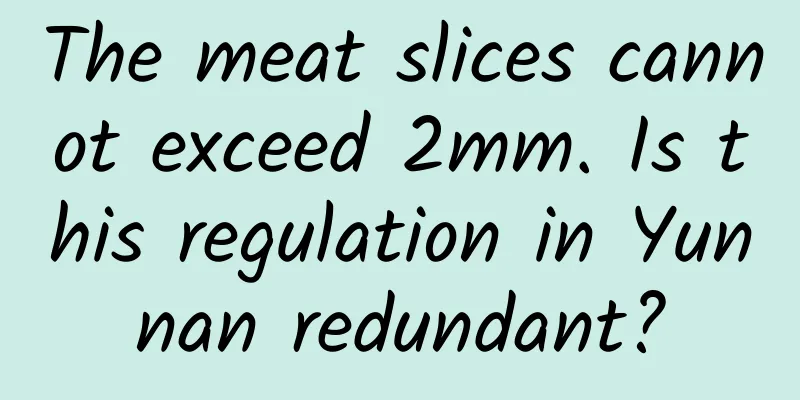[Smart Farmers] From the Sea to Shandong Cuisine Table - The Magical Journey of Sea Intestines
![[Smart Farmers] From the Sea to Shandong Cuisine Table - The Magical Journey of Sea Intestines](/upload/images/67f236464da6a.webp)
|
From the sea to the Shandong cuisine table : the magical journey of sea intestines Sea intestine is the common name of Urechis unicinctus. It is called sea intestine because its carcass is red and looks like a sausage, and it is called unicinctus because there is a circle of spines around its anus (see Figure 1). Unicinctus belongs to a small phylum in invertebrates - the phylum Urechiae. Urechiae have the same planktonic trochophore larval stage as annelids and molluscs in their life history (see Figure 2). Therefore, their positions in the phylogenetic tree are similar, and it can be simply understood that they are an annelid with degenerated body segments. Figure 1. Adult of the monocyclic spiny wormFigure 2. Schematic diagram of the trochophore larvae (picture from the Internet) The monocyclic spiny worm lives in irregular "U"-shaped holes in the muddy seabed at a depth of 10m from the intertidal zone to the subtidal zone. It is a common benthic invertebrate in the intertidal zone and subtidal shallow waters of the muddy and sandy shores along the northern coast of my country. Its geographical distribution area also includes the seas of Russia, Honshu and Hokkaido of Japan, and the Korean Peninsula. The taste of sea cucumber is delicious and it is a delicacy highly valued in the Jiaodong and Liaodong regions of my country and South Korea (see Figure 3 for a typical sea cucumber dish). The Origin of Sea Intestines and Shandong Cuisine It is related to a Shandong cuisine legend: During the Qing Dynasty, there was a royal chef from Fushan, Shandong, who cooked delicious dishes and was deeply appreciated and loved by the emperor and the empress dowager. However, the chef's dozen apprentices did not learn his true skills. Those who were interested observed carefully and found that every time the chef took the dishes out of the pot, he would shake something out of his sleeves, but no one knew what it was. The chef told his apprentices on his deathbed that what he shook out was sea rice noodle rolls! Sea rice noodle rolls are the first contributor to Shandong cuisine becoming the first of the eight major cuisines. Figure 3. Sea sausage dishes (picture from the Internet). a. Fried sea cucumber with chives b. Sea cucumber sashimi c. Grilled sea cucumber d. Sea cucumber with rice e. Sea cucumber dumplings f. Sea cucumber with garlic sauce After the 1990s, sea cucumbers became the main benthic fishery resource in the Bohai Sea and the northern Yellow Sea. Since the 21st century, with the increase in fishing intensity and the human destruction of most of the natural habitats of the single-ringed worm, its natural resources have decreased sharply, while market demand has continued to grow with social development, resulting in rising prices, making the single-ringed worm an aquaculture target with development potential, and research on it has quickly become a hot topic. At present, all links in the industry chain of the single-ringed worm breeding have been tried. 1. Seedling breeding Seedlings are the guarantee of breeding, and the breeding technology of seedlings of the monocyclic worm is basically mature. The monocyclic worm is dioecious, and the reproductive cycle can be divided into two stages (reproduction twice a year): the first stage is the major reproductive period (mid-to-late April to late May, lasting about 50 days); the second stage is the minor reproductive period (mid-September to mid-October, lasting about 30 days). In both reproductive periods, naturally mature individuals can be collected for artificial breeding, artificial dissection insemination or assisted natural insemination. The larval stage of the monocyclic stingray can be divided into three stages: trochophore larvae, segmented larvae and worm-like larvae (see Figure 4a-d). The first two have cilia and live in planktonic life. The worm-like larvae sink to the bottom of the pond after losing their cilia. The monocyclic stingray has a long planktonic period, 25-35 days, and the larval cultivation density is 0.5-2/ml. The planktonic bait can be cultured Isochrysis globosum, Nitzschia closterium, Chlorella, etc. Yeast, marine red yeast, spirulina powder, frozen Chlorella, etc. can be used as alternative baits. The feeding amount is adjusted in time according to the feeding situation. During the planktonic period, the water volume is changed twice a day, 1/3-1/2V each time. According to the accumulation of feces at the bottom of the pond, the bottom is sucked (usually 3 days) or the pond is turned over (usually 9 days) in time. When the larvae develop into worm-like larvae, the mud and sand matrix should be put in as soon as possible. The seedling matrix is sieved and washed with 60-mesh sieve, or washed mud and sand, and laid with a thickness of 2cm. Five days after the worm-like larvae are moved to the cultivation pond with mud and sand matrix, the small holes exposed on the "U"-shaped tube of the larvae (see Figure 4e) can be seen, and the intermediate cultivation of the larvae begins. The intermediate cultivation density is 20-25/cm2, and the bait can be selected from Chlorella, yeast, marine red yeast, algae powder, etc., and it is fed twice a day in the morning and evening, and the feeding amount is adjusted according to the feeding situation. As the larvae grow, when the body length generally reaches about 2mm, sparse cultivation should be carried out in different pools. When the body length reaches 5mm, it can be removed from the pond in time according to the specific situation. Figure 4. The developmental stages of the monocyclic worm. a. Trochophore larvae b, c. Segmented larvae d. Vermiform larvae e. Juvenile 2. Pond farming The monocyclic spiny worm is suitable for mixed culture with shrimp. The inlet and outlet of the pond should be unobstructed, and the bottom should be stable silt or muddy. Before stocking, use quicklime emulsion to clean and disinfect the pond, plow and level the pond bottom, expose it to the sun for 7-10 days, add water, and cultivate basic bait. Use fertilizer and concentrated algae fertilizer water. The water color is preferably adjusted to yellow-brown or yellow-green, and the transparency is controlled at 30-40cm. Seedlings can be stocked at a size of 200-10,000 heads/kg (see Figure 5a), with a stocking density of 30-50 heads/m2, and evenly spread. Pay attention to the water color and fertilize the water in time. If the water transparency is too high, you can feed yeast powder, seaweed powder, etc. in appropriate amounts. At the same time, you can add probiotics to improve the water environment. After 1-1.5 years of breeding, when the size reaches 20-30 heads/kg, it can be harvested and put on the market (see Figure 5b). 3. Marine proliferation Suitable aquaculture areas are inner bays with smooth tides or shallow seas with tortuous coastlines, with salinity of 26-35, rich bait organisms, and good wind and wave protection. The bottom is muddy or sandy muddy, and the bottom water temperature is 5-30 ℃. Choose the advection period, and in the inner range of 5″ (about 150 m) from the boundary of the bottom seeding and proliferation area, the bottom seeding operation vessel will turn back and forth along parallel lines to evenly sow the seedlings, with a row spacing of 1″ (about 30m); when sowing, a PVC pipe is connected to the seabed, and a funnel is set at the mouth of the pipe. The seedlings are poured into the funnel and sown along the pipe to the seabed; each professional ship can arrange multiple pipes according to the situation; the speed of the ship is coordinated with the sowing speed, and the speed is less than 3 knots; the seedling sowing density is 200,000-300,000 seeds/hectare. The growth rate of the bottom-seeded and proliferated monocyclic thorns is similar to that of pond culture, and it can be harvested after 1-1.5 years. Figure 5. Seedlings and adults (Photo from the Internet). a. Seedlings of P. monocyrthosiphon b. Harvested adults of P. monocyrthosiphon The monocygnus is not only a famous marine food ingredient, but also contains a variety of biologically active substances such as active polysaccharides with anticoagulant effect, active proteins with thrombolytic effect, and active peptides with anti-tumor effect, which have been experimentally confirmed, providing a scientific basis for the development and utilization of high value-added products of the monocygnus. Author: Tang Yongzheng, Associate Professor of the College of Oceanography, Yantai University, Executive Director of Shandong Zoological Society, Secretary General of Yantai Bioengineering Society Review expert: Zhang Quansheng, Professor of Yantai University College of Oceanography Coordinator: Liu Yadan, Research Fellow, National Chief Science Communication Expert Editor: Wu Yuetong Proofreader: Jiang Ruiyi (internship) |
Recommend
Why is your information flow copy conversion rate not high?
I have been thinking, what is the essence of Inte...
Which is the brightest star in the night sky?
Produced by: Science Popularization China Author:...
Case analysis: How to increase user growth?
During the survey, we found that “growth means” i...
An unfinished product promotion plan, with my latest thoughts on product operations
For confidentiality reasons, the specific content...
3 misunderstandings and solutions in operating Xiaohongshu!
As content marketing explodes, Xiaohongshu become...
Next stop: Uranus! NASA is planning a mission to explore an icy planet. When will it depart?
Uranus is the second farthest planet from us in t...
WeChat 8.0.6 iOS version is officially launched with these 6 major changes
In actual testing, although there are no major fu...
Practical sharing: What is the hooked addiction model? How to use it to improve user activity and stickiness?
Let me share a new term, the HOOKED addiction mod...
Yan Hu-Infant and Child Home Care Encyclopedia Video
Yan Hu-Infant and Child Family Care Encyclopedia ...
Who uses social apps more frequently to read news? Middle-aged people outnumber young people
How many times does a WeChat user check Moments o...
What a weird thing! Are pears divided into male and female?
Pear trees are widely planted in the world and ha...
Practical Douyin promotion skills, teach you how to play Douyin from scratch!
In the past two years, the traffic dividend has b...
"Dry Goods" Complete Guide to Internet Finance New Media Marketing Plan!
New media is a relative concept. There will alway...
Apple may want to change its tactics, such as developing Android apps
[[144410]] Apple’s closed-loop ecosystem often br...
Does drinking coffee cause osteoporosis? Huaxi doctors summarize the three bad habits that hurt bones the most
When people reach a certain age, it is easy for t...









